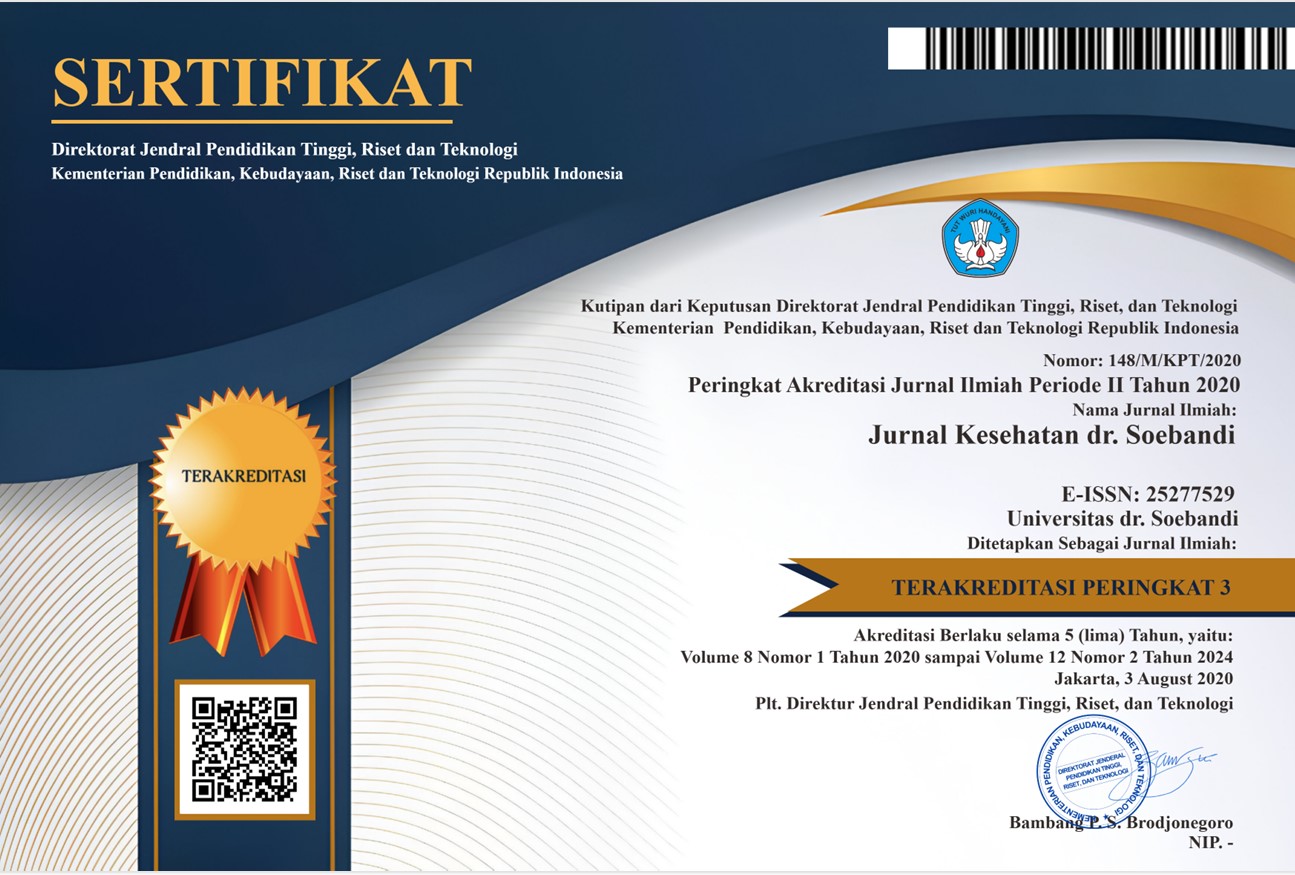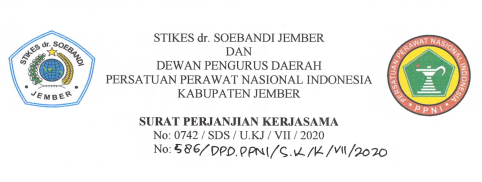Student Gadget Habits With Eye Disturbance And Visual Acuity
DOI:
https://doi.org/10.36858/jkds.v12i2.528Keywords:
Gadget, Disturbance, Eyes, Visual AcuityAbstract
Vision is one of the problems that need to be considered because vision is crucial as it plays a vital role in various aspects of life, including the educational process. Vision is additionally a factor that contributes to a decline in an individual's quality of life. The increasing use of gadgets raises concerns about the negative effects it has on vision function. The objective of this research was to identify the relationship between the habit of using gadgets with physical eye complaints and visual acuity in students. The research design was cross sectional with a population of 196 with a sample of 100 respondents. The variable of habit of using gadgets was measured using a questionnaire, subjective complaints using a questionnaire and visual acuity was measured using the Snellen Chart. The statistical test used is Chi Square. The results showed that the majority of the habit of using gadgets was in the bad category (69%), the majority of the eye physical complaints were low (55%), and the majority of the visual acuity was normal (75%). The results of the chi square statistical test between the habit of using gadgets with physical eye complaints did not have a relationship (p = 0.648) and the relationship variable between the habits of using gadgets and visual acuity also had no relationship (p = 0.708). Several factors that are thought to influence this result are the age of the respondents, the majority of whom are teenagers (92%), the indicators in eye physical complaints are dominated by eye fatigue (60%) while other complaints have a low impact on complaints in general. Other physical complaints do not appear much. presumably because when the respondents felt tired, they rested their eyes. The decrease in visual acuity is a long-term damage, while the habit of using gadgets in the majority of respondents is classified as a bad habit, but due to other factors such as young age, nutritional intake, and maintained activity patterns can slow down the process of decreasing visual acuity. It is hoped that this research can develop how long the use of gadgets can have an impact on decreasing visual acuity.priority in various child health and education programs. With the right understanding and action, we can help create a healthier and more potential future generation.
References
Andriany, A. (2017). Faktor-Faktor Yang Mempengaruhi Keluhan Penglihatan Pada Remaja Di Sma Katolik Cendrawasih Makassar. Jurnal Ilmiah Keperawatan Dan Kebidanan Holistic Care, 2(01).
Fitri, T. I., & Suprayitno, S. (2017). Hubungan Lama Penggunaan Dan Jarak Pandang Gadget Dengan Ketajaman Penglihatan Pada Anak Sekolah Dasar Kelas 2 Dan 3 Di Sdn 027 Kota Samarinda.
Hall, J. E., & Hall, M. E. (2020). Guyton and Hall Textbook of Medical Physiology E-Book: Guyton and Hall Textbook of Medical Physiology E-Book. Elsevier Health Sciences.
Hidayani, N. P. (2020). Hubungan Antara Lama Penggunaan, Jarak Pandang Dan Posisi Tubuh Saat Menggunakan Gagdet Dengan Ketajaman Penglihatan Pada Anak Kelas 5 Dan 6 Di Sdk Citra Bangsa Kupang. Chmk Applied Scientific Journal, 3(1), 27–34.
Lestari, A. D., & Mustikawati, N. (2021). Literature Review: Hubungan Penggunaan Gadget Terhadap Miopia Pada Anak. Prosiding Seminar Nasional Kesehatan, 1, 1172–1181.
Maimanah, N. (2019). Hubungan Lama Penggunaan Dan Jarak Pandang Gadget Dengan Ketajaman Penglihatan Pada Siswa Kelas 5 Dan 6 Di SD Negeri Al-Azhar Medan. Universitas Sumatera Utara, 1–71.
Navarona, A. N. I., & Mahawati. (2016). Hubungan Antara Praktek Unsafe Action dalam Penggunaan Gadget dengan Keluhan Subyektif Gangguan Kesehatan Mata Pada Murid Sekolah Dasar Islam Tunas Harapan Tahun 2016. Skripsi, 1–15.
Simaremare, A. P. R. (2020). Faktor-Faktor yang Mempengaruhi Visus pada Mahasiswa Fakultas Kedokteran Universitas HKBP Nommensen. Anatomica Medical Journal | Amj, 3(2), 67. https://doi.org/10.30596/amj.v3i2.4547
Sumakul, J. J., Marunduh, S. R., & Doda, D. V. D. (2020). Hubungan Penggunaan Gawai dan Gangguan Visus Pada Siswa SMA Negeri 1 Kawangkoan. EBiomedik, 8(1).
Wahyuningrum, T., & Prameswari, V. E. (2018). The Relationship Between Gadget Addiction and Visual Acuity in Elementary School Student of Mlirip II Mojokerto. International Journal of Nursing and Midwifery Science (IJNMS), 2(03), 217–221.
Zulfiani, E., & Susanti, E. W. (2018). Hubungan Durasi Waktu, Posisi, dan Jarak Pandang Penggunaan Gadget dengan Miopia pada Siswa Kelas I Sekolah Dasar di Wilayah Kerja Kecamatan Samarinda Ulu Tahun 2018.
Downloads
Published
How to Cite
Issue
Section
License
Copyright (c) 2024 Jurnal Kesehatan dr. Soebandi

This work is licensed under a Creative Commons Attribution-NonCommercial-ShareAlike 4.0 International License.







